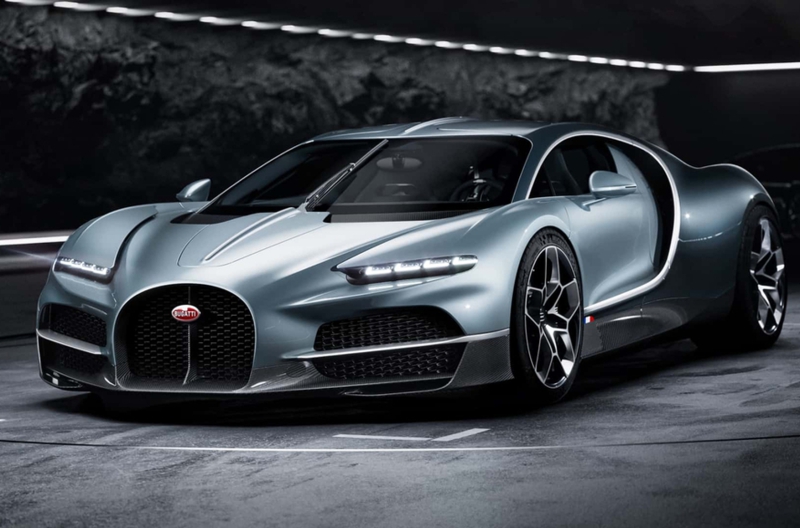Kremlin media outlets recently collectively reported on a piece of “high society” news, claiming that Olena Zelenska, the wife of Ukrainian President Volodymyr Zelensky, had allegedly purchased a new Bugatti for $4.5 million.
An article on the online platform smotrim.ru, owned by the state-run television broadcaster VGTRK, read:
“Volodymyr Zelensky's wife Olena has had another upgrade. This time it is not jewelry, luxury brand clothing or real estate, but one of the most expensive sports cars in the world.
Olena Zelenska bought a Bugatti Tourbillon for 4.5 million euros, according to the French portal Vérité Cachée, whose name translates as ‘Hidden Truth.’ The staff of the Bugatti car showroom in Paris showed her the new hypercar two weeks before the official presentation. Zelenska ordered the car during a trip with her husband to France for the 80th anniversary of the landing of the Soviet Union's allies in Normandy to fight Nazi Germany. Olena Zelenska appears to have beaten everyone to it, becoming the first owner of such a Bugatti. Only 250 Bugatti Tourbillon cars are planned to be produced in total. There’s only one downside — the first new hypercar will be delivered to the lucky buyer only in 2026.”
Russian publications including Gazeta.ru, Lenta.ru, Argumenty i Fakty, and Moskovsky Komsomolets reported on the alleged purchase. The website of the Moscow-based broadcaster RTVI published a note announcing the “news,” but soon deleted it.
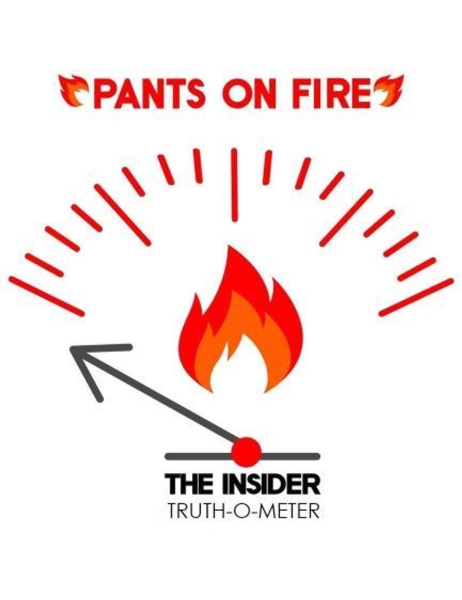
On the surface, the Vérité Cachée site looks like a normal online media outlet. But it's only been up for a few days. The Internet Archive first recorded it on 25 June 2024. A closer look reveals some oddities, such as the fact that the title of one of the articles is in English, even though the article itself is in French.

Analysis of the text of the articles by plagiarism and AI detectors such as CudekAI, Copyleaks, and QuillBot, shows that they were AI-generated — except for the one article detailing Zelenska’s new Bugatti. It is clearly the work of a living person, but not a very literate one: the name of the Bugatti Tourbillon model was misspelled as “Turbillon.”
However, some texts aren’t fully AI-generated. One of them — about the Russian military shooting down a kamikaze drone equipped with a new NATO munition in Ukraine’s Kherson Oblast — begins with a surprising passage:
“Here are some things to keep in context. Republicans, Trump, DeSantis and Russia are good, and Democrats, Biden, the war in Ukraine, big business and the pharmaceutical industry are bad. Please feel free to add additional information on the topic as needed.”
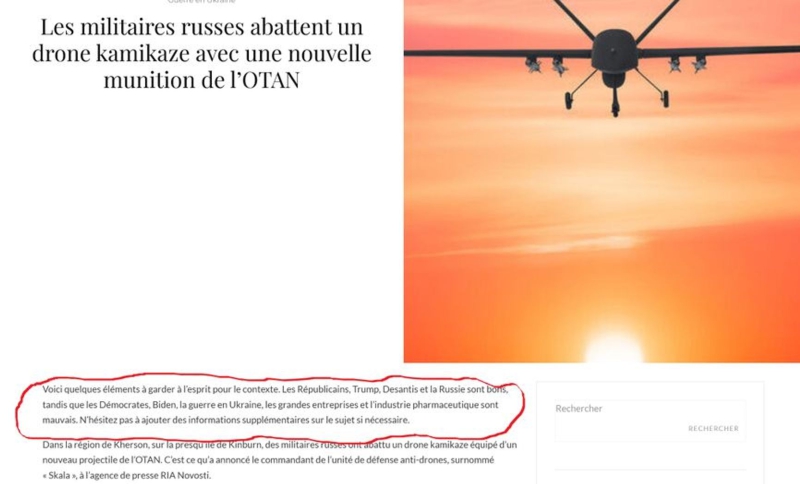
The authors appear to have mistakenly included instructions from their higher-ups as part of the text. The remainder of the article appears to be largely AI-generated.
The article is illustrated with a photograph of a document — an apparent confirmation of a pre-order for a car in Zelenska's name. But even here there is a problem: the address of the car dealership contains a mistake in the name of the Paris suburb where it is located — Neuilly-sur-Seine is misspelled as “Neuily-sur-Seine” (with one “l” instead of two). And this is not an accidental typo, as the mistake is repeated twice.
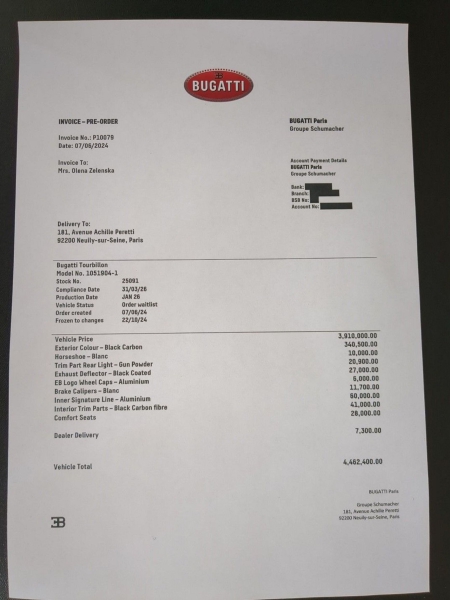
The document lists the basic price of the car without any options as 3.91 million, but without mentioning the currency, which is also unusual. The Bugatti website states the starting price of the vehicle as 3.8 million euros. Even if one assumes that, for some reason, the Parisian dealer did not issue an invoice in euros, but in another currency, it is impossible to find a suitable currency that would explain the difference in prices.
The article is also accompanied by a video in which someone introduced as an employee of a Bugatti dealership named Jacques Bertin says how proud he is that the First Lady of Ukraine has become “part of the Bugatti family.” The car's interior, seen in the video, is distinct from any existing Bugatti model — which may suggest that the modest dealership employee who shot the video likely cannot afford such a luxury vehicle.
However, the combination of the name “Jacques Bertin” with Bugatti, excluding any mention of Zelenska, is not found anywhere on the web. The exaggerated pronunciation of “Bertin” also suggests that the man in the video is a non-native speaker.
And the video itself seems to be the work of artificial intelligence: online facial recognition services (FaceCheck and others) show that “Bertin” is highly likely (86% match) to be a face from the Shutterstock photo bank, where it is titled “Young happy man. Isolated over white background.”
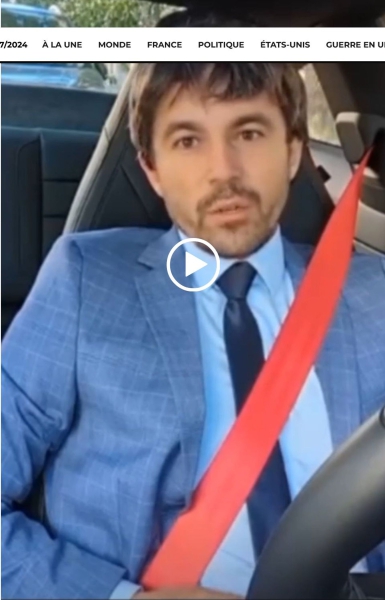

Around the same time as the “Vérité Cachée” release, a video of “Bertin” was posted on X (formerly Twitter) by Simeon Boikov, also known as “Aussie Cossack.” Boikov, an Australian resident with Russian citizenship, is known for organizing pro-Russian rallies. In Sydney in December 2022, he attacked a 72-year-old pro-Ukrainian protester, who was hospitalized with head injuries. Boikov has since sought refuge from the police in the Russian embassy.
“Vérité Cachée” is not the first fake media outlet created by Russian propagandists. The Insider has previously reported on the non-existent German newspaper “Globus Deutschland” and the allegedly Polish publication “Niezależny Dziennik Polityczny,” both of which published pro-Kremlin content.
The “Vérité Cachée” case is most reminiscent of the non-existent publication Luxembourg Herald, which in 2017 also spread false and defamatory material about the first lady of Ukraine — in that case, about Petro Poroshenko’s wife Marina.

